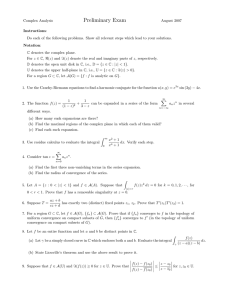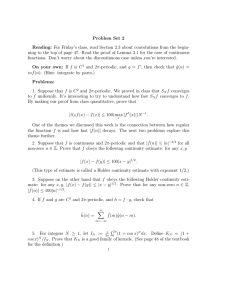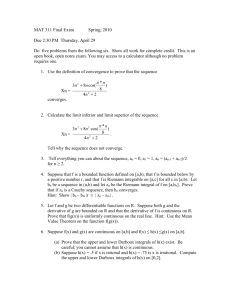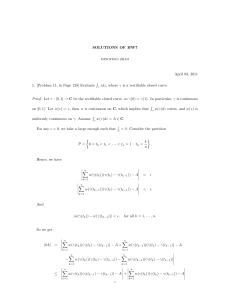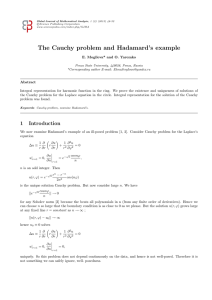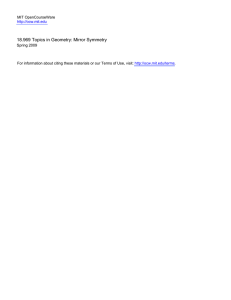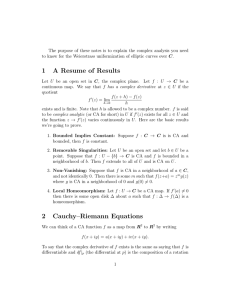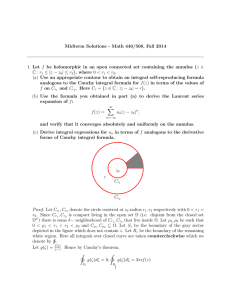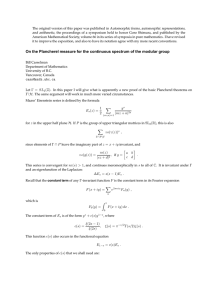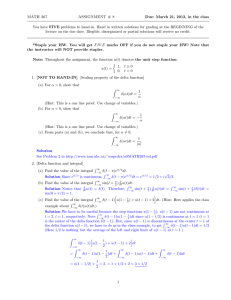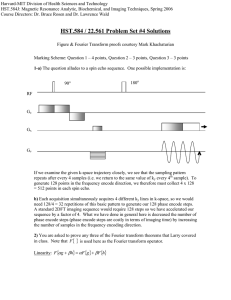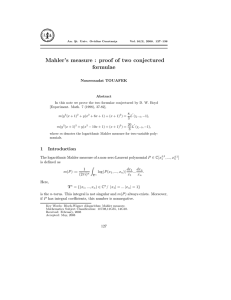Math 617 - - Homework #4 Instructor - Al Boggess Fall 1999 •
advertisement
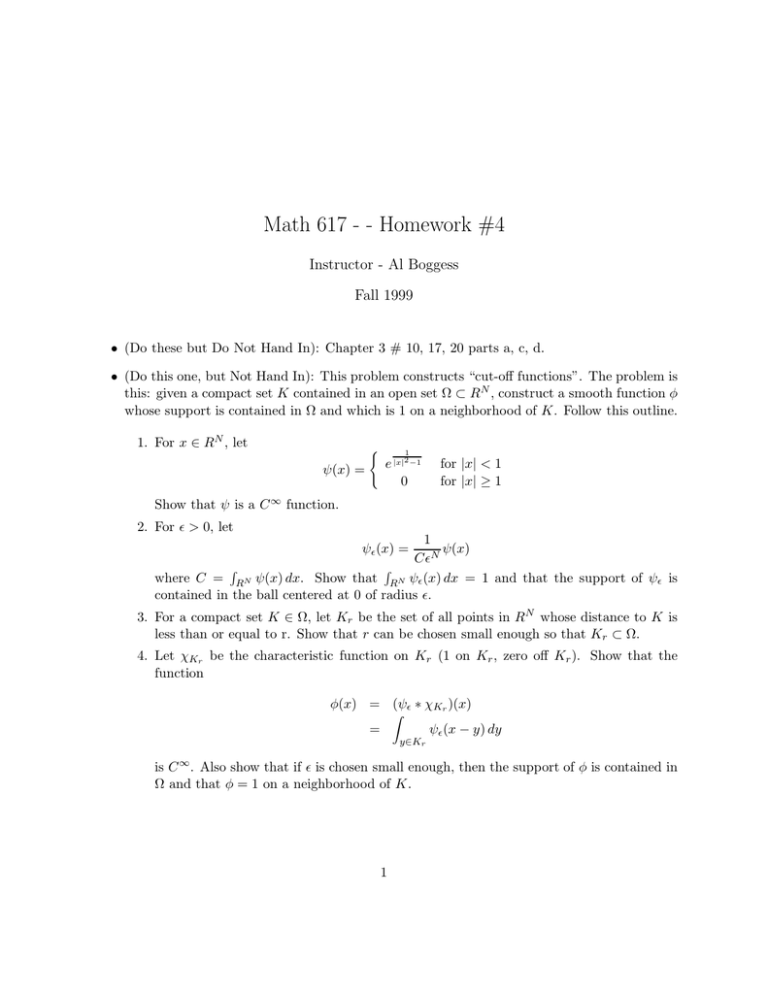
Math 617 - - Homework #4 Instructor - Al Boggess Fall 1999 • (Do these but Do Not Hand In): Chapter 3 # 10, 17, 20 parts a, c, d. • (Do this one, but Not Hand In): This problem constructs “cut-off functions”. The problem is this: given a compact set K contained in an open set Ω ⊂ RN , construct a smooth function φ whose support is contained in Ω and which is 1 on a neighborhood of K. Follow this outline. 1. For x ∈ RN , let ( ψ(x) = 1 e |x|2 −1 0 for |x| < 1 for |x| ≥ 1 Show that ψ is a C ∞ function. 2. For > 0, let 1 ψ(x) CN R R where C = RN ψ(x) dx. Show that RN ψ (x) dx = 1 and that the support of ψ is contained in the ball centered at 0 of radius . ψ (x) = 3. For a compact set K ∈ Ω, let Kr be the set of all points in RN whose distance to K is less than or equal to r. Show that r can be chosen small enough so that Kr ⊂ Ω. 4. Let χKr be the characteristic function on Kr (1 on Kr , zero off Kr ). Show that the function φ(x) = (ψ ∗ χKr )(x) Z = y∈Kr ψ (x − y) dy is C ∞ . Also show that if is chosen small enough, then the support of φ is contained in Ω and that φ = 1 on a neighborhood of K. 1 • (Hand-in Problem). Mimic the proof of the Cauchy Integral Formula to prove the following formula for all C 1 functions f : Suppose D is a bounded open set in C with oriented boundary γ, then for z ∈ D f (z) = 1 2πi = 1 2πi Z γ Z γ f (ζ)dζ 1 − ζ−z 2πi f (ζ)dζ 1 − ζ−z π Z Z ∂f (ζ) ∂ζ D ζ− ∂f (ζ) ∂ζ Z Z D ζ−z z dζ ∧ dζ dx ∧ dy (where ζ = x + iy). Note the special case when f is a C 1 function with compact support and D is a large disc which contains the support of f ; then the above equation reads 1 f (z) = − 2πi ∂f (ζ) ∂ζ Z Z D ζ−z dζ ∧ dζ for z ∈ C. This formula will be important in Math 618, when we solve the inhomogeneous Cauchy-Riemann equations. • (Hand-in Problem). 1. Prove the following summation by parts formula: suppose an ∈ C and bn ∈ C; let P AN = N j=0 aj ; then for any 0 ≤ p < q < ∞ q X n=p an bn = q−1 X n=p An (bn − bn+1 ) + Aq bq − Ap−1 bp . Hint: Rewrite the sum on the right involving An bn+1 in terms of An−1 bn (using a change of summation index). Why is this equation called summation by parts? 2. Prove the following fact: suppose the partial sums An form a bounded sequence and suppose bn is a sequence of real numbers with 0 ≤ bn+1 ≤ bn for all n ≥ 0 and bn 7→ 0 P as n 7→ ∞, then ∞ a b converges. Hint: use the summation by parts to show that n=0 P n n the partial sums of n an bn form a Cauchy sequence. 3. Use the previous result to show that P∞ n=1 z • Also hand in Chapter 3 # 20, part b. 2 n /n converges for all |z| = 1 except for z = 1.

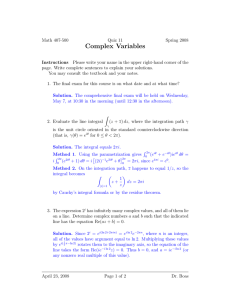
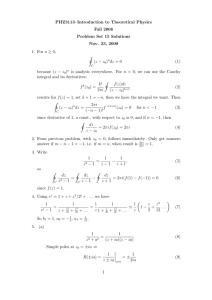
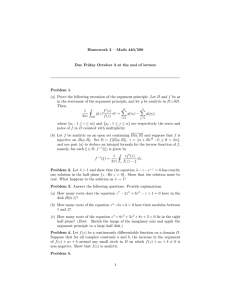


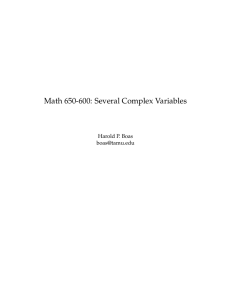
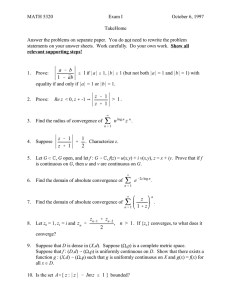
![MA3422 (Functional Analysis 2) Tutorial sheet 2 [January 30, 2015] Name: Solutions](http://s2.studylib.net/store/data/010731571_1-85c1490eb5e97193f48b0a6b0e583a8c-300x300.png)
